Faculty Bios & Research
Research
Our faculty have a wide array of research interests! To highlight this, Professor Jenia Vinogradskiy, (Faculty Alumnus, and now Vice-Chair and Director of Medical Physics at Thomas Jefferson University) has put together this video to look at just a few of the projects happening at the Anschutz Medical Campus. For more information on our research, visit our page on physics research in the department.
Faculty Bios
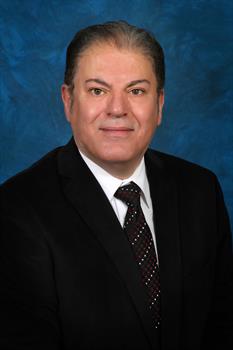 Moyed Miften, PhD, DABR, FAAPM
Moyed Miften, PhD, DABR, FAAPM
- Professor and Chief Physicist
- University of Michigan, Nuclear Engineering MS 1990
- University of Michigan, Nuclear Engineering PhD 1994
- University of Michigan Medical School, Radiation Oncology Physics Fellowship 1996
- Fellow, American Association of Physicists in Medicine 2010
Dr. Miften joined the faculty of the Department of Radiation Oncology at the University Of Colorado (CU) School Of Medicine as a Professor and Chief Physicist in October 2008. Dr. Miften received his Ph.D. in Nuclear Engineering in 1994 from the University of Michigan in Ann Arbor. Following graduation, he became a postdoctoral fellow in the Department of Radiation Oncology at the University Michigan, where he was involved in research developing advanced dose calculation algorithms for 3-D conformal radiotherapy. In April 1996, Dr. Miften joined the Department of Radiation Oncology at William Beaumont Hospital in Royal Oak, Michigan, as a Research Scientist. At Beaumont Dr. Miften shared clinical responsibilities and was involved in research on intensity modulated radiation therapy (IMRT). He then joined CMS. Inc., in St. Louis, Missouri, as a Medical Physicist where he was involved in developing software for radiation treatment planning. In November 2000, he joined the faculty at Duke University Medical School and became involved in clinical research and development of IMRT and dose-response modeling. Dr. Miften left Duke in Feb 2005, where he was an Associate Professor, to join the West Penn Allegheny Health System in Pittsburgh as a Chief Physicist, with a faculty appointment as an Associate Professor of Radiation Oncology at Drexel University College of Medicine. In Pittsburgh, he oversaw the clinical and research activities of a large group of physicists who provided service support to a network of 8 clinics in the Western Pennsylvania region and Eastern Ohio. At CU, he oversees the physics and dosimetry group. His current responsibilities involve clinical service, research, teaching and administration. His current research interests include SBRT, IGRT, IMRT, and outcome modeling. He is currently serving as an Associate Editor for the Journals of Medical Physics and Clinical Applied Medical Physics. He is also serving as a chair and a member of many scientific and education committees nationally.
8e05f0e5302864d9a5bfff0a001ce385.jpg?sfvrsn=412d94b9_0&MaxWidth=275&MaxHeight=275&ScaleUp=false&Quality=High&Method=ResizeFitToAreaArguments&Signature=08E3636A4C8A2A0F19144AC91AD7833C1436DE9E)
Leah Schubert, PhD, DABR, FAAPM
- Associate Professor and Physics Residency Program Director
- University of Wisconsin Madison, Medical Physics MS 2006
- University of Wisconsin Madison, Medical Physics PhD 2009
- Fellow, American Association of Physicists in Medicine 2021
Dr. Schubert joined the Department of Radiation Oncology at the University of Colorado School of Medicine in January of 2012. She received her PhD in Medical Physics at the University of Wisconsin, Madison in 2009, where her research was focused on image guided radiotherapy. Following graduation, she joined the faculty at the University of Nebraska Medical Center, where she was involved in treatment planning systems, external beam, brachytherapy, and teaching in the medical physics residency program and the radiation therapist training program. Dr. Schubert currently shares clinical responsibilities for the external beam radiation therapy program, HDR brachytherapy, and eye plaque brachytherapy. She co-chairs the department-wide quality and safety program. Dr. Schubert is the Director of the Medical Physics Residency Program, having been involved in the program since its inception and has successfully led it through accreditation since. Dr. Schubert’s research interests focus on patient safety, quality improvement, and innovations in resident education. She is also serving as a chair and a member of national committees within AAPM, SDAMPP, and the ABR related to patient safety and resident education.
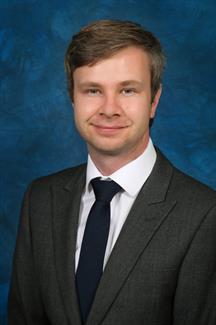 David Thomas, PhD, DABR
David Thomas, PhD, DABR
- Associate Professor
- University of St Andrews, UK, Physics (MPhys) 2004
- Georgia Institute of Technology, Electrical & Computer Engineering (MS) 2005
- University of Edinburgh, UK, Medical Physics (PhD) 2010
Dr. Thomas joined the faculty of the Department of Radiation Oncology at the University of Colorado School of Medicine in July 2016. He received his PhD from the University of Edinburgh (UK), where his research focused on the physics and acoustics of resonating microbubbles in an ultrasound field, with relevance to contrast enhanced ultrasound imaging of microvasculature perfusion. Following graduation, he began a post-doctoral fellowship at the University of California Los Angeles, where he developed techniques for radiotherapy treatment planning that explicitly consider and compensate for breathing motion. Dr. Thomas’ current research interests include: Motion management techniques, 4D dose calculations, Functional lung imaging, MRI guided radiotherapy and Adaptive radiotherapy.
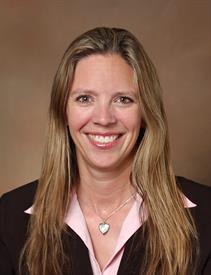 Kelly Stuhr, MS, DABR
Kelly Stuhr, MS, DABR
- Associate Professor of Clinical Practice
- University of Colorado Denver, Medical Physics MS 1996
Ms. Stuhr joined the physics staff at the University of Colorado Department of Radiation Oncology in 1996. Ms. Stuhr is a board certified medical physicists whose clinical interests include stereotactic radiation therapy, image guided radiation therapy, and high dose-rate brachytherapy. Ms. Stuhr also helps organizing and coordinating the dosimetry and physics teams. Ms. Stuhr’s primary research interest is investigating various techniques for treatment planning and delivery of stereotactic radiation therapy. Outside of work, Kelly can be found racing her jet ski at the lake.
.png?sfvrsn=1455a9ba_0&MaxWidth=275&MaxHeight=275&ScaleUp=false&Quality=High&Method=ResizeFitToAreaArguments&Signature=874945C3C5E3E0F0E7D6EC514DDCC3211F8B327E) Greg Penoncello, DMP, DABR
Greg Penoncello, DMP, DABR
- Assistant Professor
- Vanderbilt University, Medical Physics MS 2014
- Vanderbilt University, Medical Physics DMP 2015
- Mayo Clinic Florida, Medical
- Physics Residency in Radiation Therapy 2015
Dr. Penoncello joined the faculty of the Department of Radiation Oncology at the University of Colorado School of Medicine in November of 2021. His DMP work primarily focused on the skin dose differences to head and neck cancer patient utilizing different treatment planning modalities and techniques. Following graduation and residency completion Dr. Penoncello worked at Memorial Sloan Kettering for a year before moving to Mayo Clinic Arizona for 5 years. Dr. Penoncello’s current research interests include assessment and evaluation of commercial clinical TPS systems for the construction of dose volume histograms and using a plastic scintillator camera system for routine dosimetric quality assurance measurements and to reconstruct 2D and 3D dose distributions.
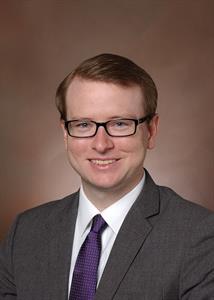
Bernard (Tripp) Jones, PhD, DABR
- Associate Professor
- Georgia Institute of Technology, Medical Physics MS 2009
- Georgia Institute of Technology, Nuclear Engineering
PhD 2011
- University of Colorado School of Medicine, Postdoctoral
Fellowship 2014
Dr. Jones came to CU as a postdoc in 2011, and joined the faculty as a physicist in 2014. He received his PhD in Nuclear Engineering from the Georgia Institute of Technology, where his research focused on nanoparticles for radiation therapy and small-animal imaging. At CU, Dr. Jones uses advanced imaging and delivery techniques to address the problem of motion during ablative radiation therapy for pancreas, liver, and prostate tumors. His work uses a “Big Data” approach to examine the wealth of imaging data generated during clinical care, and create accurate models of tumor motion, displacement, and deformation. He received a number of industry and foundation grants to implement real-time kV motion monitoring for pancreatic SBRT, and received an NIH grant on Coded Aperture Scatter Imaging to passively track tumor motion during treatment without requiring additional imaging dose. Outside of work, Dr. Jones enjoys playing soccer, running, parenting two very active young kids, music, and retro video games.
.jpg?sfvrsn=8fb889b9_2&MaxWidth=300&MaxHeight=300&ScaleUp=false&Quality=High&Method=ResizeFitToAreaArguments&Signature=BA787BB9DF17F21EBC2C5C4517C15C6FA881181B) Cem Altunbas, PhD, DABR
Cem Altunbas, PhD, DABR
- Associate Professor
- State University of New York, Physics PhD 2004
- University of Texas MD Anderson Cancer Center, Radiation Physics Fellowship 2007
- Virginia Commonwealth University, Medical Physics Residency 2009
Dr. Altunbas joined the faculty of the Department of Radiation Oncology at the University Of Colorado School Of Medicine as an Assistant Professor in 2009. Dr. Altunbas received his PhD in Physics from SUNY Buffalo in 2004. Following his graduation, he continued his career as a postdoctoral fellow in Imaging Physics at the UT MD Anderson Cancer Center in Houston. During his fellowship, he worked on the development of a digital chest radiography system and cone beam computed tomography techniques for breast cancer imaging. Dr. Altunbas is a board certified medical physicist, and is responsible in part for linear accelerator quality assurance, brachytherapy treatments, and external beam treatment planning. Dr. Altunbas’s research interests include evaluation of radiation treatment response using quantitative imaging techniques, and utilization of x-ray imaging modalities in radiation therapy.
.jpg?sfvrsn=20b889b9_2&MaxWidth=300&MaxHeight=300&ScaleUp=false&Quality=High&Method=ResizeFitToAreaArguments&Signature=4482E49E631DBABB2674947ADD2241C0D736DE32) David Westerly, PhD, DABR
David Westerly, PhD, DABR
- Associate Professor
- University of Wisconsin Madison, Medical Physics MS 2007
- University of Wisconsin Madison, Nuclear Engineering MS 2009
- University of Wisconsin Madison, Medical Physics PhD 2009
Dr. Westerly joined the faculty of the Department of Radiation Oncology at the University Of Colorado School Of Medicine in November of 2009 after completing his PhD in Medical Physics at the University of Wisconsin, Madison. His expertise is in radiological physics and dosimetry with particular emphasis on helical tomotherapy as well as dose calculation algorithms used in radiation therapy treatment planning. In the clinic, Dr. Westerly shares the responsibility for the seed implant program and quality assurance of external beam radiation therapy. Dr. Westerly’s research interests include the use of medical imaging for therapy guidance and assessing treatment response, radiation beam modeling and dose calculation techniques, image segmentation and registration methods, as well as proton and heavy ion therapies for the treatment of neoplastic diseases.
Jason Senn, MS, DABR
- Instructor
- East Carolina University, Medical Physics MS 1994
Jason Senn joined the physics staff at the University of Colorado Department of Radiation Oncology in 2016. Mr. Senn’s primary interest and focus is in clinical implementation of emerging technologies and clinical support at satellite Radiation Oncology clinics and hospitals within the UCHealth system. Mr. Senn has a wide range of experience providing clinical support to facilities over many years as part of consulting Medical Physics groups. Jason enjoys hiking, climbing, and mountaineering and has lived in Colorado for 20 years.
.jpg?sfvrsn=8db889b9_2&MaxWidth=300&MaxHeight=300&ScaleUp=false&Quality=High&Method=ResizeFitToAreaArguments&Signature=BFC9E90672A0361DF28692BD22C1B80674AE305C) Quentin Diot, PhD, DABR
Quentin Diot, PhD, DABR
- Associate Professor
- Ecole Polytechnique, Quantum Physics MS 2002
- University of Colorado Boulder, Atomic Physics PhD 2008
- University of Colorado School of Medicine, Radiation Oncology Physics Fellowship 2010
Dr. Diot joined the faculty of the Department of Radiation Oncology at the University Of Colorado School Of Medicine as an Assistant Professor in July 2010. Dr. Diot received his PhD in atomic physics from the University of Colorado at Boulder in 2008. Following graduation, he started working as a postdoctoral fellow in the radiation oncology department at the University of Colorado. Dr. Diot shares clinical responsibility for the external beam radiation therapy program (including VMAT), as well as the brachytherapy eye plaque program. Dr. Diot’s research interests include image-guided radiotherapy, rotational radiation delivery, biological-based optimization, biological outcome modeling, and radiation-induced lung tissue changes.
 Andrew Santoso, PhD
Andrew Santoso, PhD
- Assistant Professor
- Wayne State University School of Medicine, Radiological Physics MS 2015
- University of Wisconsin Madison, Medical Physics PhD 2019
- University of Colorado, Therapeutic Medical Physics Residency 2021
Dr. Santoso joined the Department of Radiation Oncology at the University of Colorado School of Medicine in November 2021. He received his PhD in Medical Physics at the University of Wisconsin, Madison in 2019, where his research focused quantitative ultrasound imaging for pregnancy. Following graduation, he conducted his residency in Therapy Physics at the University of Colorado and completed the program in 2021. Dr. Santoso currently shares clinical responsibilities for the external beam radiation therapy program and will have primary responsibility for UCHealth Longs Peak Medical Center. Broadly, Dr. Santoso’s research interests include medical physics outreach and education, quantitative imaging for treatment response, and motion management. Outside of work, Dr. Santoso enjoys baking, hiking, and exploring Colorado’s beauty.
Adam Mahl, PhD
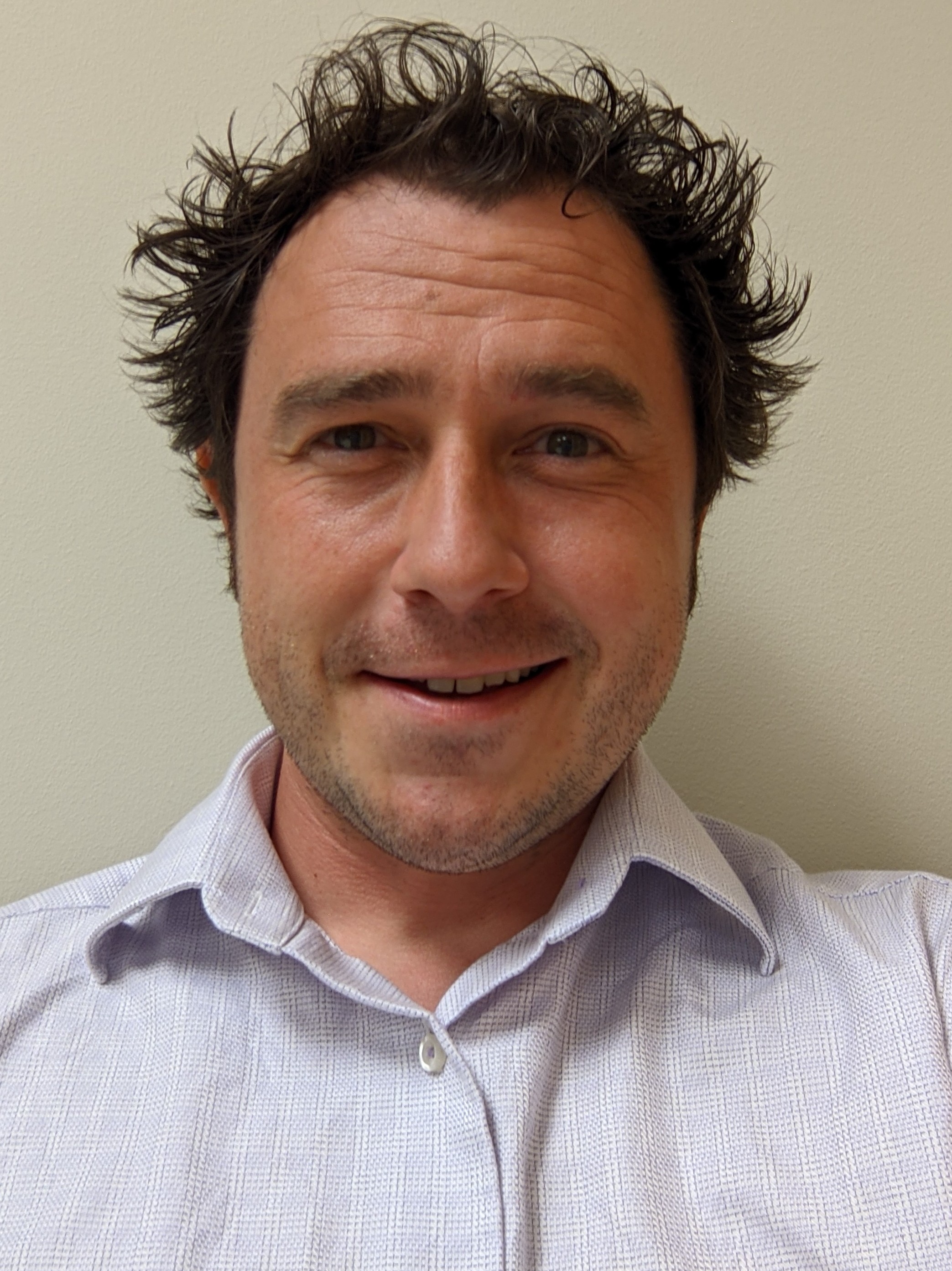
- Assistant Professor
- Colorado School of Mines, Nuclear Engineering MS, 2017
- Colorado School of Mines, Applied Physics PhD, 2018
- University of California Los Angeles, Medical Physics Certificate, 2021
- University of Colorado, Therapeutic Medical Physics Residency, 2023
Adam joined the faculty of the Department of Radiation Oncology, Division of Medical Physics at CU Anschutz in July of 2023. He completed his PhD in applied nuclear physics at the Colorado School of Mines in 2018 where his research focused on organic scintillator development for nuclear security and fluorescent molecule synthesis to explore pulse shape discrimination capabilities and theory. He joined the CU Anschutz Radiation Oncology Department in 2019 as a postdoctoral fellow working with Tripp Jones on NIH-funded research focused on Monte Carlo simulation and optimization of novel imaging modalities. After completing a medical physics certificate at UCLA and the therapeutic medical physics residency at CU Anschutz, he joined the faculty as a clinical physicist. Currently, he helps maintain the external beam machine QA program where he is a machine physicist and one of the physicists focused on treatments in our HDR brachytherapy, LDR eyeplaque, and GammaTile programs. Adam's current research interests include ongoing Monte Carlo modeling of clinical scenarios related to both imaging and model-based brachytherapy, as well as a continued focus in physics quality assurance methods and integrating new technologies into established workflows to enhance clinical efficiency.
Christina Breeze, MS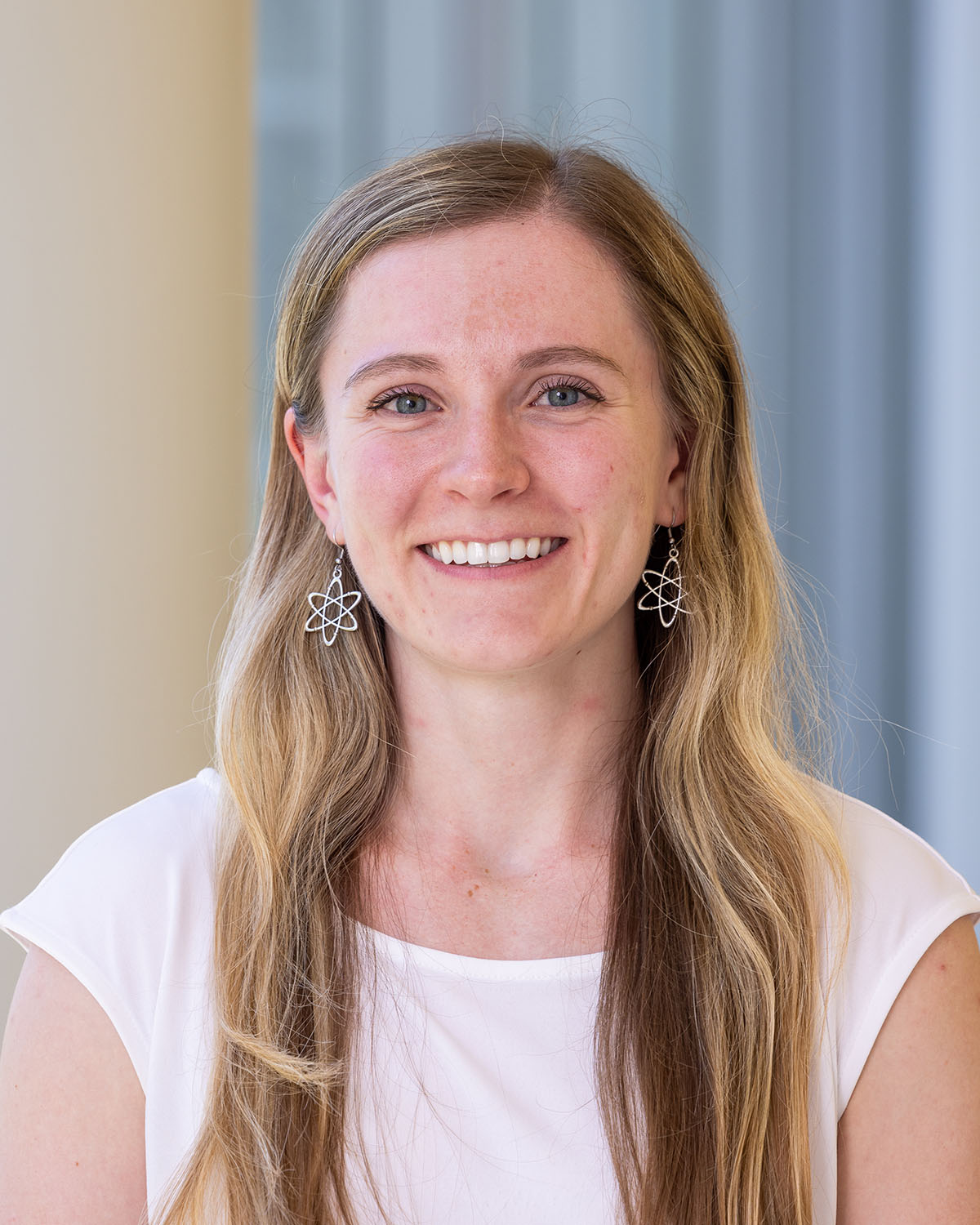
- Instructor, Clinical Medical Physicist
- University of Wisconsin-Madison, Medical Physics MS, 2021
- University of Wisconsin-Madison, Therapeutic Medical Physics Residency, 2023
Christina Breeze joined the Department of Radiation Oncology at the University of Colorado School of Medicine in July 2023. Ms. Breeze is working towards her board certification and helps to cover the main hospital at the Anschutz Medical Campus, the Gamma Knife Center, and the Highlands Ranch satellite location. Her interests include stereotactic radiosurgery, Gamma Knife, safety and quality improvement, treatment planning, and brachytherapy. She is currently a member of the physics team for the new Gamma Knife Tile program. A Colorado native, Ms. Breeze enjoys outdoor adventure and ballroom dance.